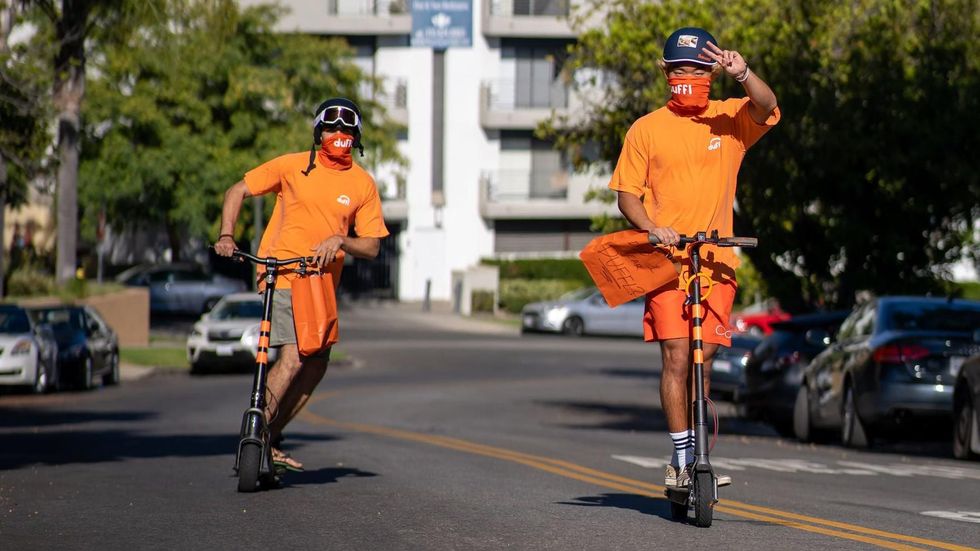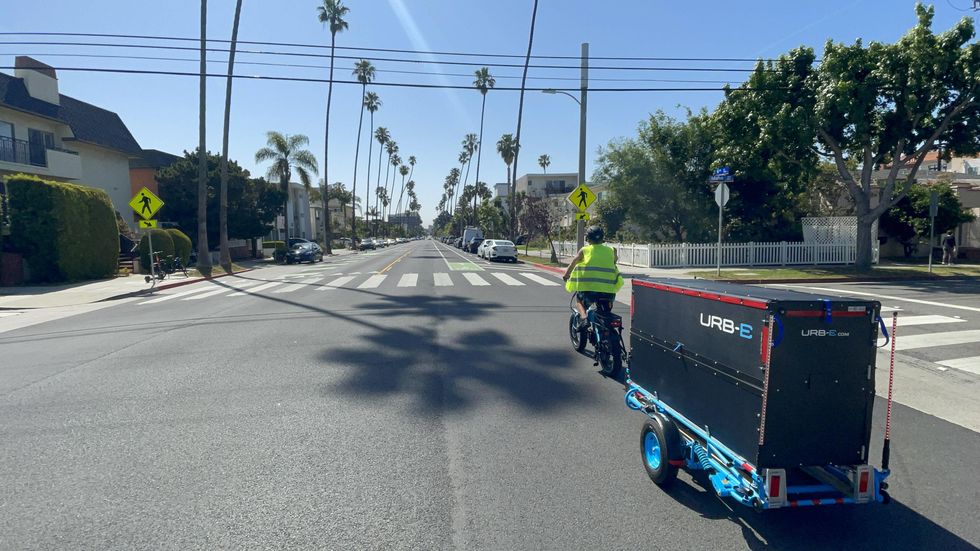Supertext, a European-based global marketing company, was designed to help companies go global by providing clients with copywriting, translation, and localization services.
“Going global is a question of access,” said Supertext CEO Kristy Sakai in a presentation Thursday for L.A. tech week. “Giving people access to your products or your services — and in return, a bigger market is opening up to you.”
Supertext was launched in Switzerland, but has since expanded to Los Angeles and Berlin. The company helps brands understand the language and culture of international markets and works with them to remarket their content to translate smoothly to other languages. Sakai said you could think of Supertext as the “messenger” for your brand.
For example, Lime—the E-scooter and E-bike company—worked with Supertext to globalize their brand. Sakai said Lime’s original plan was to brand all of their materials as having something to do with actual limes.
“Their whole thing was calling their batteries ‘juice’ and ‘squeezing’ [the gas], and it was all based on that idea of limes,” she said. “And if you imagine translating that to like 50 countries, that’s a question of how do we recreate that feeling that you’re connected to the brand, but also explain something in a fun way?”
Sakai said that in order to help a client globalize a brand, there are a lot of research and technical questions to be answered first. Like, who is your target audience and how should you speak to them?
“And then ultimately doing the translation part, which could be very creative,” she said.
Since launching in 2005, Supertext has worked with more than 6,000 companies. According to Sakai, clients come from all industries and fit into different categories, and the process might actually be easier than you think.
“Going global is really lucrative, everything is there. You just have to localize it,” she said.
-------
On Friday, celebrity chef Giada De Laurentiis sat down with fans and tech professionals to discuss turning her brand into a digital empire. Giadzy is De Laurentiis’s digital food pantry that sells homemade products imported from farmers and mostly family-owned companies in Italy. De Laurentiis started it when she realized many people don’t have access to the foods and ingredients she loves.
“People who have been to Italy know that you can eat pasta and pizza and bread and not gain a lot of weight,” De Laurentiis said. “A lot of it has to do with the sourcing of the ingredients. A lot of the products we import are from families that have had this land for centuries.”
De Laurentiis said she created Giadzy to help provide better access for Americans wanting to shop for the fresh, Italian ingredients she is so passionate about.
“When you make fresh pasta, you don’t feel terribly bloated,” she explained. “You don’t get sick from it because the flour isn’t spoiled.”
“The bottom line,” De Laurentiis continued, “is that the products are cleaned, sourced really well, and these families care about what they’re doing.”
Giadzy sells everything from olive oil to flour to pastas from De Laurentiis’s ancestral hometown, Torre Annunziata.
----------
To close out LA Tech week, nonprofit BioscienceLA—which describes itself as the “innovation catalyst for life sciences in Los Angeles”—hosted a podcast panel Sunday brunch to discuss building communities.
The first round of panelists featured Alexandra Levitt, senior manager at Yellow, and Elisabeth Tuttass, head of community at Grid 110.
Both women discussed the desperate need for community they felt upon first moving to L.A., and how they wanted to create a space for others like themselves to feel a sense of belonging.
The second round of panelists — Brett Goldstein, co-founder of Launch House, Christen Nino De Guzman, founder of Clara, Zack Honarvar, founder of Creator Now, Aidan Wolf, AR House founder and Tyler Denk, founder of Beehiiv — added their thoughts on building communities, discussing how they built careers based on that very concept.
Goldstein said he and his team started Launch House during the early stage of the COVID-19 pandemic to take back control of their lives. “We had this sensation that we were just kind of waiting and [feeling] disempowered and wanted to take control and make advances in our careers,” he said.
Like Goldstein, founder Nino De Guzman launched the Clara app when she realized content creators needed a shared community of resources.
“I realized that influencers don’t realize how much they could get paid for deals,” she explained. “So I launched Clara as a ‘Glassdoor for content creators.’”
The final round of panelists included Andy Wilson, executive director of So Cal Alliance, Adonica Shaw, founder and CEO of Wingwomen, Rob Ryan, founder and CEO of GrowthHax, Jenny Weigle, CCO and strategic consultant of Jenny.Community, and Jonathan Chang, XIR at Brex and founder of GenZScouts. Each added their own insight as to why it’s important to have a community no matter what you do.
“Ideas are great, but ideas without ecosystems are just ideas,” Wilson said. “So we have to commit to building intentional networks and relationships.”
The full discussion featuring all panelists will air on the WeAreLATech podcast.
- L.A. Tech Week: Surfing, Kabobs and Gen Z's NextDoor - dot.LA ›
- LA Tech Week: 3D Printed Homes, Micromobility and Metaverse ... ›
- LA Tech Week: Women's Health, the Metaverse & VC - dot.LA ›
- talkshoplive Raises $3M Seed Round - dot.LA ›
- A16z's Tech Week Returning to LA This June - dot.LA ›


 Image courtesy of Duffl.
Image courtesy of Duffl. An URB-E rider hauls deliveries in Santa Monica.
Image courtesy of URB-E
An URB-E rider hauls deliveries in Santa Monica.
Image courtesy of URB-E